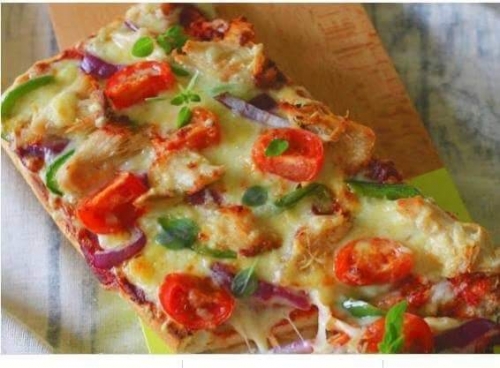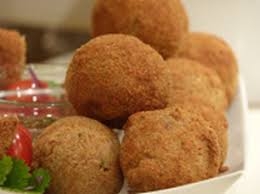Stories And PoemsCommunications And EntertainmentNews And PoliticsMotivationalsEntertainmentCelebrityStoriesNewsHealth And LifestyleRelationship And MarriageFood And KitchenReligion And PrinciplesRelationshipsHistoryPersonal Care And BeautyGeneralMoneyGive AidFoodLifetipsHobbies And HandiworksHealthPoliticsMotivationAnnouncementBeautyIT And Computer ScienceLifestyleComedySecurityMenBusinessGiveawayPrinciplesReligionHerbal MedicineLawSpiritualityFamily And HolidaysOthersScience And Technology
profile/7945received_5139201582833624.webp
Kweenshantel

How To Make Yummy Agege Pizza Bread
~0.9 mins read
Agege Bread Pizza
Ingredients
Agege bread
Tomato sauce
Grated cheese (cheddar or mozzarella)
Variety of chopped vegetables (eg onion, green pepper, etc)
Chicken shreds (preferably cooked or roasted chicken. Other types of meat can also be used.)
Fresh herbs (basil or thyme)
Salt and pepper
Olive oil
Methods:
Slice the bread across its breadth and place on an oven tray.
Separately, make some tomato sauce by mixing some tomato paste, olive oil, warm water and salt and pepper in a bowl.
Spread sauce on the sliced bread evenly. Then top with grated cheese, followed by chopped onions, green peppers and shredded chicken. (Also add other toppings of your choice.)
Drizzle with some extra virgin olive oil.
Then place in a pre-heated oven with the top grill on. This will allow the pizza to cook from the top. Remember the bread is already cooked so it would not need much further cooking.
Allow to cook for about 10 minutes, checking regularly to avoid burning.
Serve hot.... I promise you your kids will ask for more.
profile/7945received_5139201582833624.webp
Kweenshantel

Easy Steps On How To Prepare Yummy Yam Balls
~2.2 mins read
Easy Steps On How To Prepare Yummy Yam Balls.
Instead of boiling or frying your yam see the best way to enjoy it.
I know not everyone loves to eat yam but I can assure you with this method I'm about to show you will love to eat yam.
If you know you are not following me kindly follow me, so as to get interesting articles like this from me.
This delicious yam delicacy is called yam balls and I want you to try it out so you'll understand why people prefer the yam balls to just boiling of yam.
Ingredients
1. Yam
2. Egg
3. Pepper
4. Salt
5. Ginger
6. Salt
7. Vegetable oil
8. Onions
Steps in making Yam Balls
- Peel off the back of the yam and wash it
- Boil the yam
- When the yam is done use a mortar and pestle mash it a bit
- Make a sauce with your onions, ginger, garlic pepper and maggi
- Mix the sauce with the slightly mashed yam and mash again
- You can now use your hand to roll it into a ball and set it aside
- Break the eggs and add maggi in a bowl
- Now you'll need to make use of your frying pan and add your vegetable oil please make sure you allow the oil to bleach.
- You can now put in your already rolled yam balls into the egg and fry till it brown.
Serve hot and you'll see how delicious it taste
You can eat it with pepper sauce. Old and young loves to eat the ALMIGHTY Yam Balls.
Thanks for reading my little write up.
Kindly share your thoughts below.
Your comment will be highly appreciated
Don't forget to like and share.
Follow me @gswiz to get more exciting gist and Entertainment news at your finger tip.
Advertisement

Link socials
Matches
Loading...
